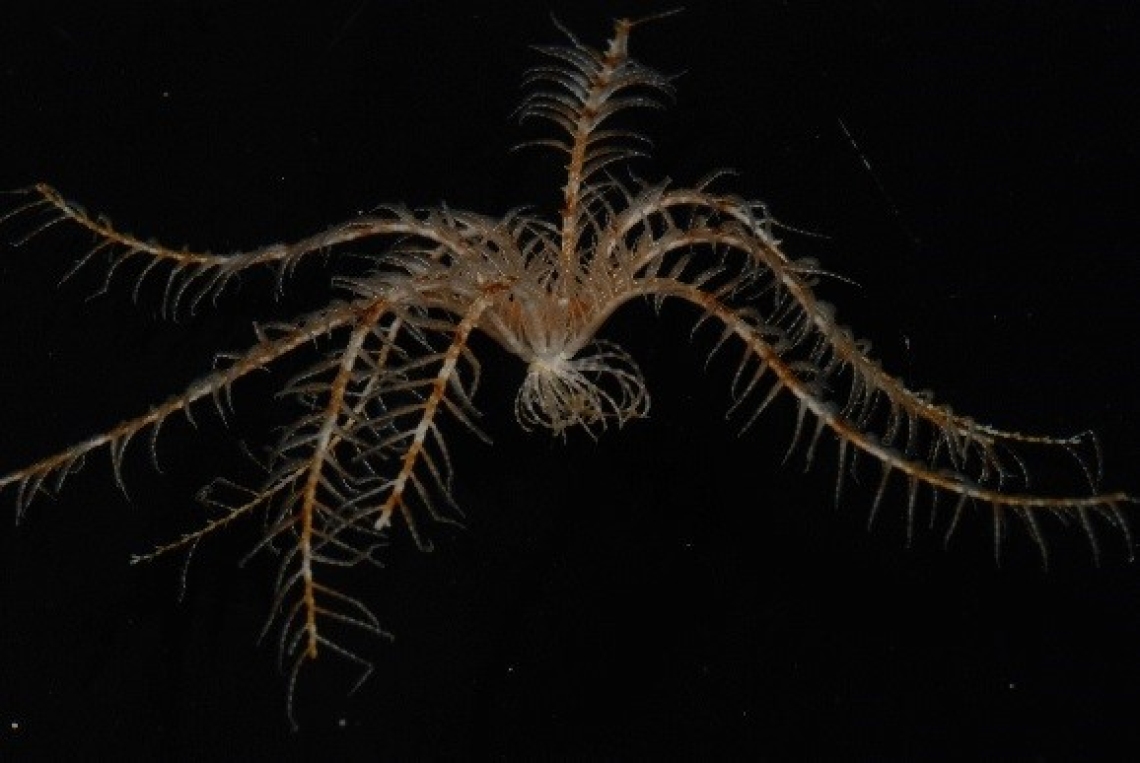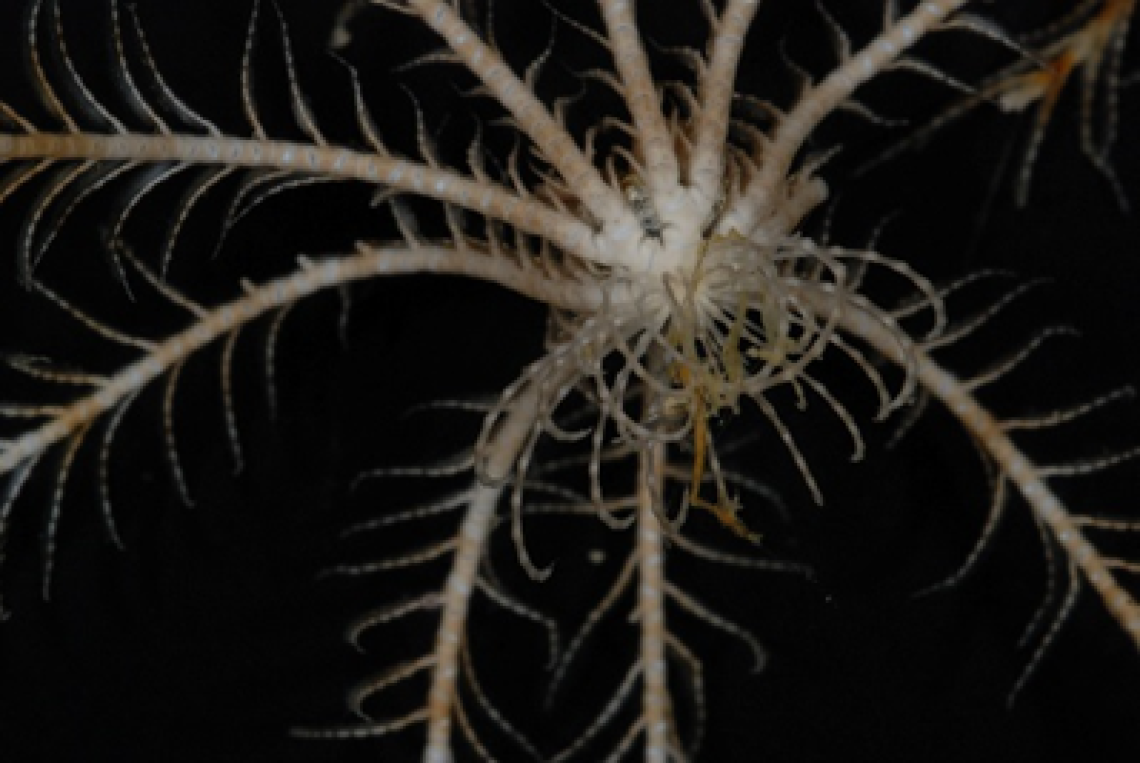17 July 2014
This week's Critter of the Week (number 130) is the feather star Argyrometra mortenseni.
We have only ever featured one sea lily or crinoid before (see CotW 80 from May 2013), something we needed to rectify since crinoids are a fascinating and truly ancient group. The Crinoidea form a class of echinoderms. Therefore, they are related to the starfish, sea cucumbers, brittle stars and urchins, and they are commonly considered to be the most primitive of all the other echinoderms. The name crinoid is derived from the Greek word krinon, "a lily", and eidos, "form".
The majority of the crinoids known today belong to a further sub-group, the unstalked ‘feather stars’ or comatulids (as opposed to the stalked crinoid we featured in CotW 80) and their common name aptly reflects the fact that they look more like a delicate underwater feather duster than an animal. Many of you have probably come across them if you have poked your head under water over a tropical coral reef.
See some other examples of crinoids and the animals that live on them on DiveGallery.com
Crinoids in the fossil record
Crinoids seem to have stuck to their incredibly simple body plan since they first appeared around 500 million years ago. They are considered living fossils and species we see today seem to look remarkably similar to 250-million-year-old fossils. There are about 600 species known today, but more than 5000 fossil species have been described to date, so they are a historically very successful group.
Crinoids in New Zealand
In New Zealand, we so far only know of 67 species of which a few are still undescribed (1), with the majority living in the deep waters beyond 100m. Only two species are possibly encountered by divers, Oxycomanthus plectrophorum in the southern Fiords area and Cenolia spanoschistum around the northern tip of New Zealand (both have been listed in old text books as belonging to the genus Comanthus). The latter was photographed by Richie Robinson in Catton’s cave during last year’s Three Kings expedition that we featured.
View Richie Robinson's photos from the expedition
Argyrometra mortenseni
From around 100m depth, one might encounter the beautiful little species Argyrometra mortenseni. We collected this sample at 150 meters off the Bay of Islands in northern New Zealand in 2009 (see images). The sample pictured is about 6 cm across, from tip to tip. This is a widespread southwestern Pacific species and we have found A. mortenseni from around 110-250 m deep on the New Zealand continental shelf from the east coast of Northland down to Ranfurly Bank off the East Cape.
A side view of the same animal illustrates the difference between the stalked crinoid we featured in CotW 80, and this unstalked comatulid crinoid (see image). The stalk is just about absent here.
Apparently, earlier life stages of comatulids still have a stalk which is eventually shed except for the very top segment which forms the base which bears the slender cirri which are used for anchoring the animal. This is shown in the close-up of the crinoid (see image).
Read more about crinoids on Charles Messing’s Crinoid Pages
Graceful comatulids
In contrast to the attached or the slowly crawling stalked crinoids we linked to last time, the comatulids are agile and graceful.
Take a look at this video of live specimens of this species collected during the 2009 Bay of Islands voyage, filmed by Warrick Lyon. Crinoids seem to swim doggy-paddle style, just with more arms and legs than our four-legged friends.
Similarity to Avatar woodsprites
We were reminded of crinoids when we watched the movie Avatar. Perhaps you remember the ‘woodsprites’, the seeds of the Tree of Souls. They say the woodsprites are similar to deep-sea jellyfish, but most marine biologists we’ve talked to agree that they look like crinoids! Take a look and see what you think.
Check out the Avatar movie’s wiki page on woodsprites
Crinoids old style
Crinoids feature in this interesting paper on the little known New Zealand crinoid fauna. The paper was written by H. Barraclough Fell in 1950 in the Journal of the Biological Society of New Zealand and introduces the topic of crinoid taxonomy with analogies from Treasure Island.
Read the article in Victoria University’s New Zealand Electronic Text Collection
Reference
(1) Gordon, D. (2009) New Zealand Inventory of Biodiversity. Volume One: Kingdom Animalia Radiata, Lopotrochozoa, Deuteromstomia. Canterbury University Press, Christchurch.



